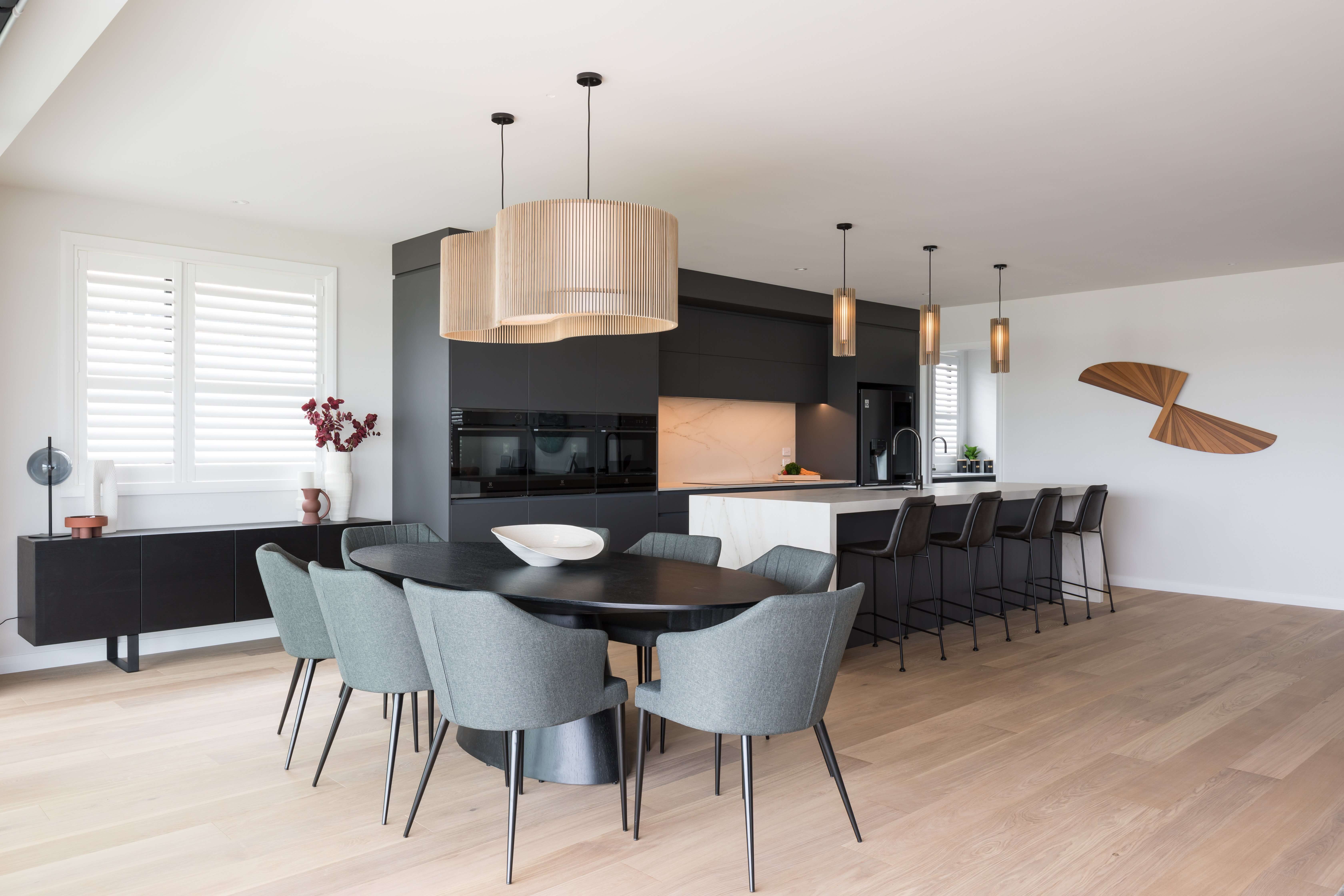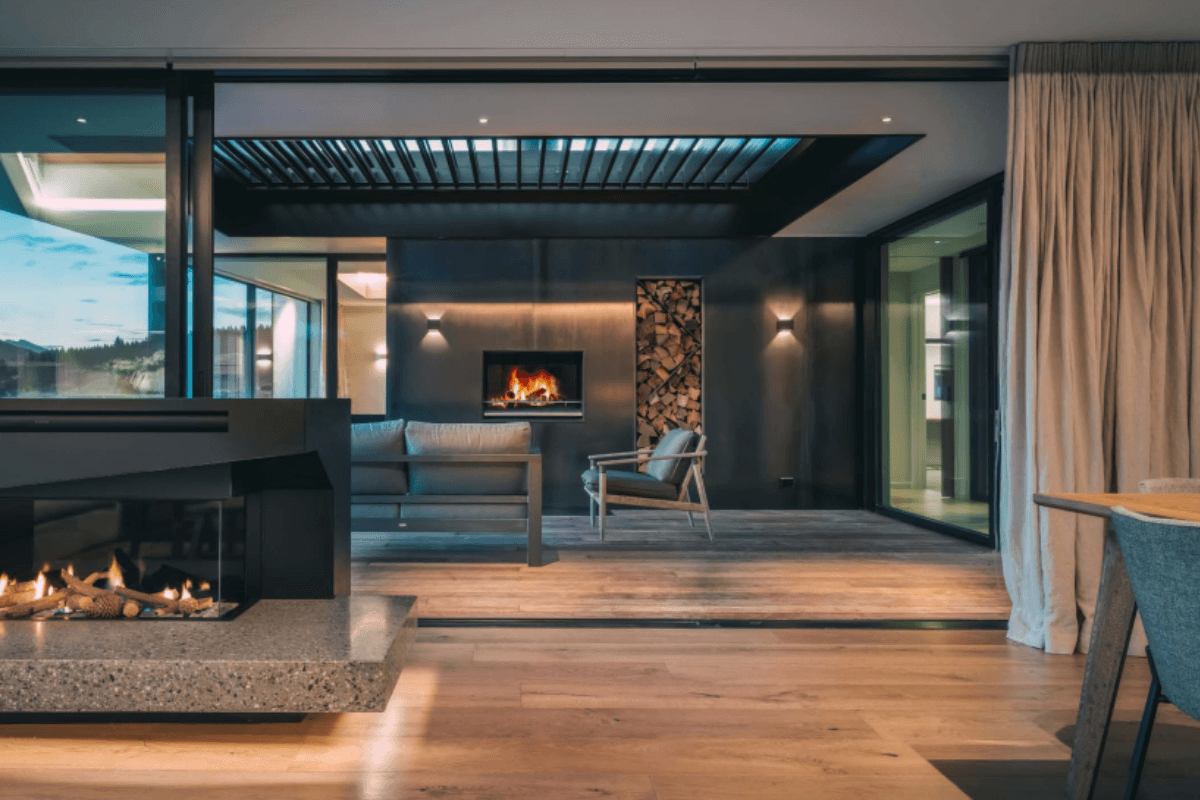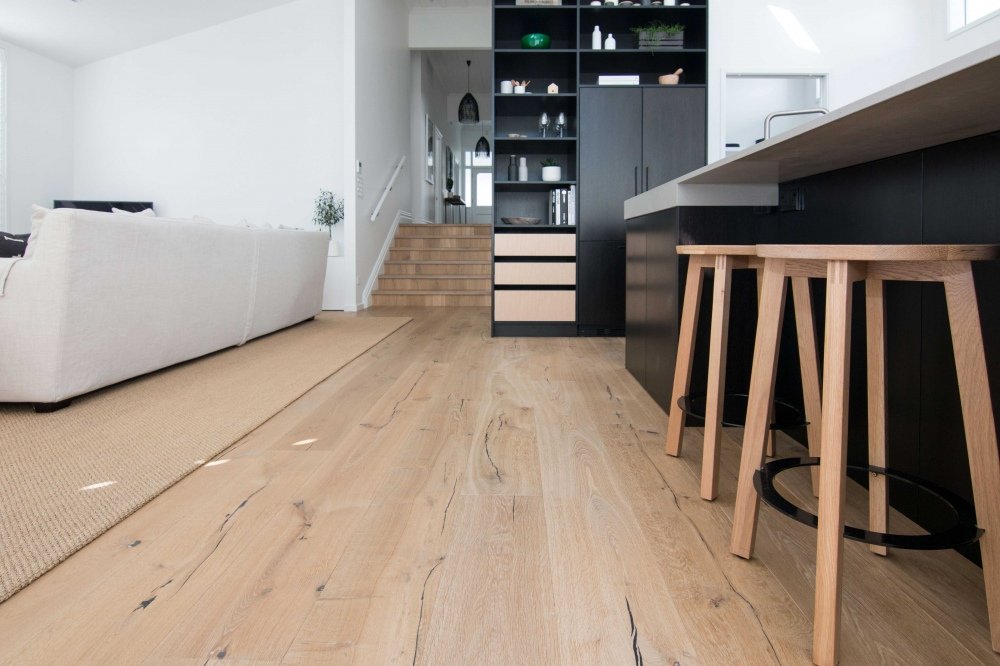What Are The Different Types Of Wood Flooring?
Blog |
Timber flooring is a beloved feature of many homes across New Zealand. With its warmth and character setting the tone for the entire space, it’s a material as unique as the people that walk across it every day. What’s less obvious is that the different types of wood flooring create a very different effect, and leave a different impression in each environment.
Whether you’re an architect, developer, homeowner or installer, this article will help you navigate the variety of options available, so you can choose the best option for your individual needs. It also outlines various installation techniques and industry terminology that you may find useful as you survey your options.
Types of wood flooring
- Solid wood flooring
- Engineered wood flooring
- Parquet flooring
- Bamboo wood flooring
- Laminate wood flooring
Solid hardwood timber flooring
Solid hardwood is made from a single piece of timber that is cut, sanded, and finished to create a smooth surface. These boards have natural colour, depth, and grain variation, making them uniquely beautiful. They can usually be refinished several times during their life and are solid. This means that the wood effect you see on the surface runs through the entire plank or panel.
Hardwood can come pre-finished and ready to use immediately after installation, provided the installation is completed by a professional and the boards have undergone a 2 to 3-week period of acclimatisation. This prevents warping and ensures the condition of the panel is maintained for a long time.
Hardwood flooring can be laid onto bearers and joists or secured onto a subfloor using the tongue and groove system. If the boards you choose are site-finished, some sanding, staining, and polishing may be required after they are laid.
When people think of wood flooring this is often the process that springs to mind, but that doesn’t mean it’s the best option for everyone.
Engineered wood flooring
Engineered wood flooring consists of a layer of real hardwood laid on top of multiple plywood layers, which make up the core of the plank. The result is a much more affordable option than solid timber, without compromising on the finish. Engineered wood flooring also comes prefinished, reducing installation time and costs.
The real wooden layer is often a minimum of 3mm thick, with Forté floors being characterised as having a minimum real wood layer of at least 4mm, and sometimes as much as 6mm. This over-engineering ensures a flawless similarity to real hardwood floors, including the ability to sand and refinish several times during the plank’s lifespan.
Additionally, engineered wood boards can be laid without nails or glue, floating above any flat surface. Engineered wood flooring can be installed on tiles, making it ideal for renovations and existing buildings alike.
With thicknesses ranging from 12mm to 20mm, engineered wood flooring is increasingly popular in residential homes and commercial spaces. Not only will it stand the test of time but it also provides a strong, high-level finish.
Parquetry flooring
Parquet floors are made of small timber pieces, either fully hardwood or engineered timber, which are laid out in a geometric pattern. Common patterns include lineal, basketweave, square-on-square, and herringbone. This usually comes preassembled and glued down on top of a timber subgrade or a level concrete slab, but manually laid parquet is also common.
This type of flooring references a final design style rather than a specific type of fabrication, so if this is the desired finish it’s worth considering both a real hardwood application and an engineered wood construction to achieve this result.
Bamboo
While bamboo is technically a type of grass, its strength and durability make it a popular alternative to traditional timber. Bamboo floorboards are produced by shredding the long natural fibres and reforming them using heat, pressure and resin-based adhesives.
Since bamboo is hard and extremely fast-growing, it is considered a relatively sustainable solution. However, there are some chemicals used during production that detract from this, impacting its reputation as a ‘green’ product.
Laminate
While it’s not made of timber, laminate flooring can provide a similar visual appearance at a much lower price. Laminate is made of synthetic materials, sometimes combined with natural wood, with a picture of timber applied over the top.
While this is good as a ‘wood-look’ alternative to timber flooring, it’s only a visual simile. Underfoot, and upon inspection, it quickly gives up its true nature so it is the most viable option for projects where durability and costs are the primary considerations and not the authenticity of the finish.
Laminate is popular with those looking for an affordable flooring product, but it is less sustainable. Once the appearance of laminate is damaged or faded, it is virtually impossible to restore it. Unlike timber, damaged laminate flooring cannot be repaired, and must be replaced.
Installation techniques and terminology
Laying timber flooring correctly requires specialised skills and expertise. To help you choose which product is right for your project, we’ve outlined some of the key industry terms you need to know.
Pre-finished floors
There are two options when choosing hardwood flooring boards – pre-finished or site-finished. Pre-finished panels are treated by the manufacturer before being installed, saving time and labour on site. On the other hand, site-finished requires final treatment once the wood is in-situ.
With a pre-finished timber solution, before the boards are delivered to the site, the manufacturer will apply multiple clear coats of protective varnish. This gives the boards a blemish-free and enduring finish – a popular choice for convenience and efficiency.
Site-finished floors
Site-finished flooring is installed raw and finished on-site. The material cost is lower but the amount of labour required during installation is higher, often raising the overall cost of the project. For some people, the freedom to choose a finish after the flooring has been installed is worth the additional cost.
The Janka hardness rating
Hardness ratings are used to measure a product’s ability to resist indentation and wear. The most commonly used rating system for floors is the Janka Hardness Scale, which measures how much force is required to embed a small steel ball into the surface.
The more pressure required, the higher the rating and the more durable the product is. Common examples of hardwoods include oak, ash and teak, while pine, rimu and cedar are common softwoods. Generally, softwoods are not suitable for flooring due to their pliability.
Moisture content
The moisture content of a flooring material indicates the amount of water it contains. This is a critical consideration during installation as it affects stability and durability. Moisture content can be affected by environmental conditions such as temperature and humidity, as well as the type of material used.
The ideal moisture content depends on the specific type of material and the environment in which it will be installed. High moisture content can cause expansion, warping, or cupping, while low moisture content can cause shrinkage or cracking.
Proper moisture content testing and control are crucial for ensuring a long-lasting and stable installation. For this reason, some products may need to undergo an acclimatisation period before being laid.
Acclimatisation period
An acclimatisation period is the process of allowing materials to adjust to the environment where they are being installed. The product is left in the room for a certain period of time before installation, allowing it to adapt to the temperature and humidity before undergoing final fitting. It’s very similar to allowing a nice glass of wine to breathe before enjoying it.
This minimises the risk of expansion, warping, and shrinkage after installation. The length of the acclimatisation period varies depending on the product and environmental conditions.
Tongue and groove flooring
This technique is when each board is machined with a 5mm ‘tongue’ and 5mm ‘groove’ on either side. These edges slot into each other, preventing the planks from moving and creating gaps. It’s a fast and effective method of attaching wooden floor planks to each other in such a way as to not move over time.
Secret nailed
This technique is where the floorboard is nailed through the ‘tongue’ edge of a board. This way, the boards are fixed to the joists, batons, or substrate with no visible nail heads. The result is a smoother, safer floor.
End joining
End joining, or end matching is when each board has a tongue and groove at the ends as well as on the sides. This allows the installer to ‘float’ boards where there are no studs or joists to mount them.
Since the planks are interlocked on all four sides, the floor is stronger and there is no need to cut board ends to fit onto a stud or joist. This results in faster installation, less waste, and cost savings.
Linear metres
Once you know the area of the floor you need to cover, you need to calculate the linear metres for the specific product specifications. To calculate this, divide the square metre area by the width of the board.
For example, if your chosen board is 100mm wide, a room measuring 4m by 5 metres requires 200 linear metres: 0.1m board x 40 boards x 5m long = 200 linear metres.
Wastage
This term refers to the amount of material that is wasted during installation. For example, the board cannot be used when the ends are split or the board is discoloured. The wastage rate can range from 10-25% depending on the installation method and should be factored into the required lineage for the space being covered.
There are two key ways to reduce your wastage rates. Firstly, opt for a high-quality product like engineered hardwood. Secondly, make sure your installer uses the end-joining technique.
At Forté, we provide you with all the flooring solutions you need. Taking your preferences, budget, and local climate into account, our engineered hardwood boards offer the ideal combination of visual appeal, sustainability, and longevity.
For beautiful products that you can trust, contact us today, browse the range, or request a free sample kit to get started.
Request a free sample kit
Visit one of our Showrooms
If you have any queries about our products or need help with your project, we can provide you with expert advice. Visit one of our showrooms or book a consultation with our flooring experts today.


